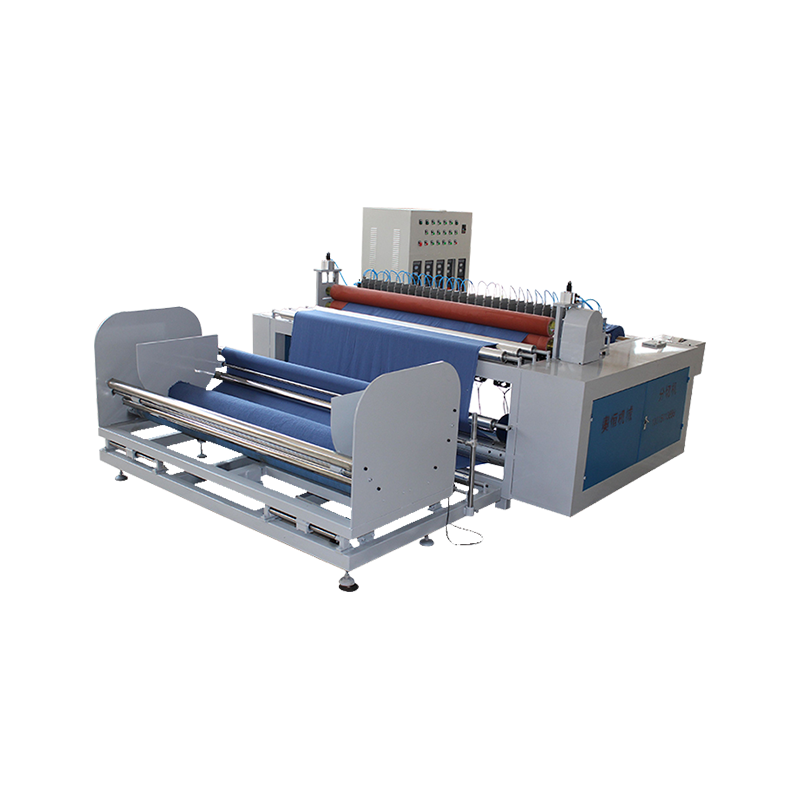Request A Quote

Ultrasonic textile slitting machines represent a significant technological advancement in the processing of synthetic and blended fabrics. By employing high-frequency ultrasonic vibrations rather than conventional mechanical cutting, these machines deliver sealed, fray-resistant edges with exceptional precision and consistency. As demand grows for high-performance technical textiles across sectors such as apparel, automotive interiors, medical products, and composite manufacturing, the role of ultrasonic slitting technology becomes increasingly critical. This article explores the operating principles, functional benefits, material compatibility, and industrial relevance of ultrasonic textile slitting machines within advanced textile processing ecosystems.
Content
At the core of an ultrasonic textile slitting machine is a piezoelectric transducer that converts electrical energy into mechanical vibration, typically at a frequency of around 20–35 kHz. These vibrations are transmitted to a horn or blade assembly, which comes into direct contact with the fabric. When pressed against the textile under controlled pressure, the ultrasonic energy generates localized heat through molecular friction, effectively melting and cutting the material simultaneously.
Unlike traditional rotary or crush cutting methods, ultrasonic slitting is a non-mechanical process in the sense that it doesn’t rely on shearing forces to separate the fabric. Instead, the thermal effect induced by ultrasonic oscillation fuses the edges during the cutting process. This fusion prevents fraying, eliminates the need for post-processing, and enhances edge integrity.
Ultrasonic slitting offers several performance advantages that are particularly important in high-specification textile applications:
Fray-Free Edges:
Mechanical slitting methods often leave raw edges that require additional finishing to prevent fraying. Ultrasonic slitting eliminates this issue by sealing the cut edges during the process, which is especially beneficial for synthetic fabrics like polyester, nylon, polypropylene, and acetate.
Reduced Particle Generation:
Conventional slitting methods can generate lint or microfibers, which is problematic in cleanroom, filtration, and medical textile applications. Ultrasonic slitting produces clean cuts with minimal particulate contamination.
No Tool Wear or Blade Replacement:
Because the ultrasonic horn does not rely on sharpness to cut, there is minimal wear compared to steel blades. This translates into lower maintenance requirements and greater long-term cost efficiency.
Precision and Repeatability:
Ultrasonic systems are capable of micron-level precision, making them well suited for slitting narrow tapes, webbings, or ribbons with highly consistent edge quality. This is critical for products where tolerances are tight, such as seam reinforcements or electronic textile integrations.
Reduced Thermal Deformation:
Unlike laser cutting, which also seals edges, ultrasonic slitting localizes the heat to a narrow zone, reducing thermal distortion and preserving the dimensional stability of delicate fabrics.
Ultrasonic slitting is particularly well suited for synthetic textiles or blends that contain thermoplastic fibers. This includes, but is not limited to:
Polyester (PET)
Nylon (PA)
Polypropylene (PP)
Acetate and triacetate
PVC-coated fabrics
Thermoplastic polyurethanes (TPU)
Natural fibers such as cotton or wool, which lack thermoplastic properties, are generally not suitable for ultrasonic slitting unless blended with synthetic components that can melt and seal the edges. For optimal results, the fabric composition, thickness, weave structure, and surface treatments must be considered when configuring slitting parameters such as amplitude, speed, pressure, and horn geometry.

Ultrasonic textile slitting machines are integrated into production lines across a variety of industries, where precision edge control and process cleanliness are imperative:
Technical Textiles:
For industrial fabrics used in composites, conveyor belts, or insulation, ultrasonic slitting ensures dimensionally stable, sealed edges that maintain fabric performance during lamination, sewing, or molding.
Automotive Interiors:
In vehicle interior components—such as seatbelts, headliners, and trim—ultrasonic slitting helps manufacturers meet strict quality and safety standards by producing consistent, fray-free tapes and panels.
Apparel and Undergarments:
High-performance sportswear and intimate apparel benefit from ultrasonic slitting in the processing of elastic bands, seam tapes, and decorative trims. The clean cut improves aesthetics while preventing edge unraveling during use.
Medical and Hygiene Textiles:
Ultrasonic slitting supports contamination-free edge finishing in disposable masks, surgical drapes, wound dressings, and sanitary products, where fiber cleanliness and sealed edges are essential for product safety.
Filtration Media:
In air and liquid filtration applications, the reduction of loose fibers and edge particles is vital. Ultrasonically slit synthetic nonwovens or mesh fabrics meet these functional and regulatory requirements.
Modern ultrasonic textile slitting machines are often integrated into roll-to-roll processing lines for continuous production. Depending on the configuration, machines may include:
Servo-controlled feeding systems for accurate tension management
Multi-lane slitting units for simultaneous processing of multiple strips
Edge guiding and web alignment systems
Slit width adjustment mechanisms with motorized precision controls
Programmable logic controllers (PLCs) for recipe storage and production tracking
In high-volume operations, automation of reel changeover, slitting width setup, and fabric inspection can significantly enhance throughput while reducing labor dependency. Ultrasonic slitting systems can also be combined with ultrasonic welding modules for inline bonding or hemming.
Despite its advantages, ultrasonic slitting is not universally applicable. Some of the challenges include:
Material Dependency: Non-thermoplastic materials or loosely woven fabrics may not respond well to ultrasonic energy, resulting in incomplete sealing or frayed edges.
Initial Investment: Ultrasonic slitting systems typically have higher upfront costs than conventional slitting machines, which may deter adoption in low-margin or small-scale operations.
Edge Hardness: The sealed edge may exhibit stiffness depending on material and amplitude settings, which could affect the drape or hand feel in garments or decorative textiles.
Thermal Sensitivity: Overexposure to ultrasonic energy can cause edge yellowing, shrinkage, or distortion in certain heat-sensitive textiles unless precisely calibrated.
Copyright © ChangZhou AoHeng Machinery Co., Ltd. All Rights Reserved

 English
English 中文简体
中文简体 русский
русский Español
Español